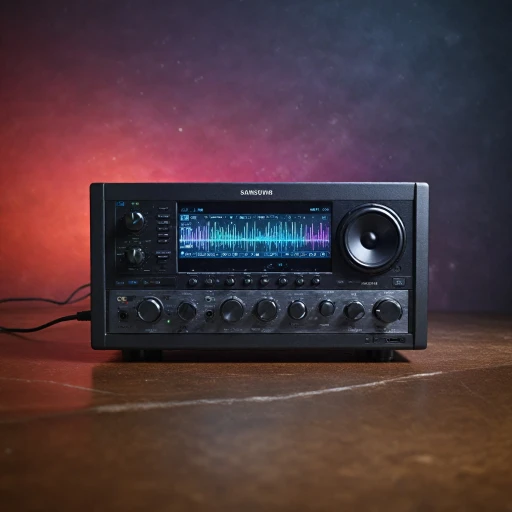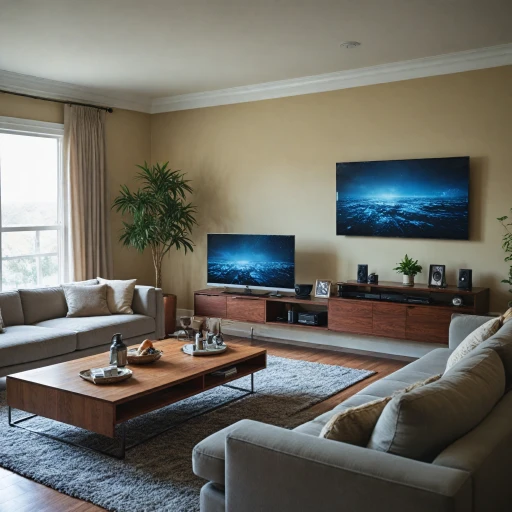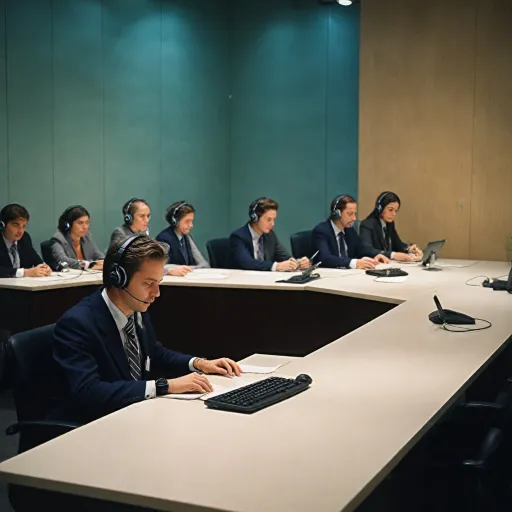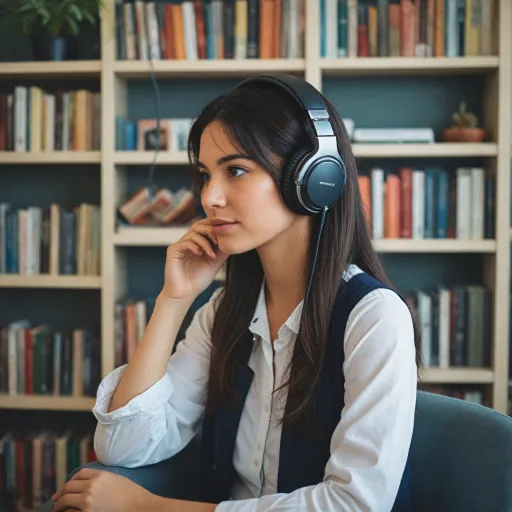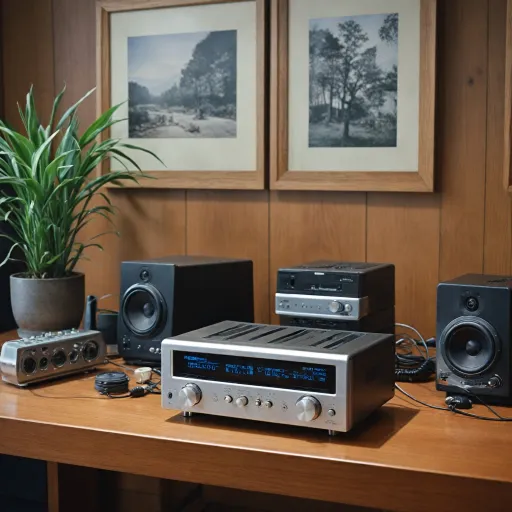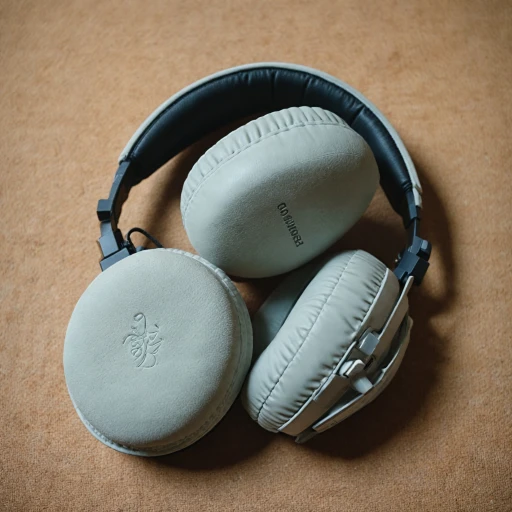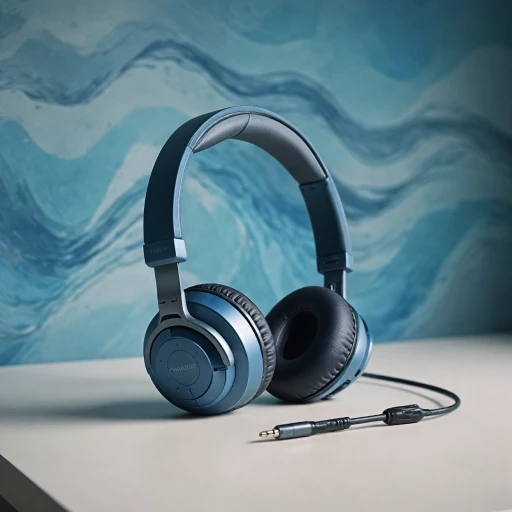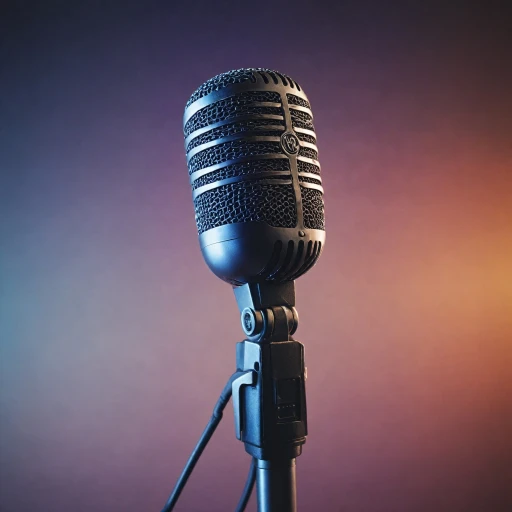
Understanding Noise Canceling Technology
Delving into the Mechanics of Noise Cancelation
The heart of noise-canceling headphones lies in their sophisticated technology, designed to create a serene listening environment by neutralizing unwanted ambient sounds. In essence, these devices use two primary methods: passive noise isolation and active noise canceling (ANC). Passive noise isolation works by physically blocking out noise, focusing on the design and materials of the headphones. This might involve snug-fitting ear cups or in-ear headphone tips that nestle into the ear canal, eliminating the intrusion of external sounds. Active noise canceling, on the other hand, represents a more advanced approach. It leverages microphones placed within the headphones to detect environmental sounds, allowing the device to generate inverse sound waves that effectively cancel out unwanted noise. This technology is particularly effective for low-frequency noises, such as the hum of an airplane engine or the rumble of urban traffic. Considering these capabilities, it's crucial to highlight that the sound quality delivered by noise-canceling headphones largely depends on the models and their technological prowess, which can influence the price range. Some users prioritize sound quality with exceptional bass performance, and you can learn more about exploring headphones with exceptional bass performance. Noise-canceling technology is incredibly beneficial for those with hearing aids, as it can help to mitigate background noise that may interfere with their listening experience, providing a clearer sound. This effectiveness, however, varies based on the specific disorders in hearing loss. Coupled with Bluetooth compatibility, these headphones can seamlessly link with various audio devices, enhancing the overall listening experience. It's important to note that not all headphones are designed with the same level of attention to fit and comfort. Users with a moderate hearing loss, for instance, may frequent the use of bone conduction headphones, which transmit sound directly through the skull bones instead of the ear canal, offering a unique solution distinct from conventional earbuds or over-ear designs. Ultimately, understanding the core of noise cancelation technology offers individuals valuable insight into choosing devices that complement their hearing needs, allowing them to enjoy music and sounds with reduced external interference.Compatibility Between Hearing Aids and Headphones
Bridging the Gap: Compatibility Concerns
When investigating noise-canceling headphones, one primary consideration for individuals with hearing aids is the level of compatibility between these two devices. Understanding this relationship can enhance the auditory experience and address the challenges associated with simultaneous use. For many, the integration between hearing aids and headphones lies in how the two devices fit together within or around the ear. Whether you use in-the-ear (ITE) aids, completely-in-the-canal aids, or behind-the-ear (BTE) models, each setup presents unique challenges in terms of space and comfort. Headphones must not disrupt the functionality of hearing aids while delivering clear sound quality. Here are some key factors to bear in mind:- Fit and Comfort: The physical structure of hearing aids and headphones should not interfere with one another. For instance, bone conduction headphones may offer a more compatible fit for users with ear-inserted aids as they do not sit directly in or on the ear.
- Bluetooth Compatibility: Modern hearing aids often come equipped with Bluetooth functionality, which can be leveraged to connect seamlessly with headphones. This feature allows dual connectivity for streaming music and other audio content directly to your aids, potentially offering a fuller listening experience.
- Volume Management: Achieving the right balance of volume is crucial so that audio is neither overpowering nor too faint. Many hearing aids come with adjustable settings to help find the optimal level for both clarity and comfort when used alongside headphones.
- Sound Quality: Enhancing sound quality through effective synchronization between the devices is imperative. Advanced headphones often support high-definition audio transmission that can be finely tuned to match the hearing aid's specifications.
Benefits of Noise Canceling Headphones for Hearing Aid Users
Advantages of Noise Canceling Headphones with Hearing Devices
The synergy between noise canceling headphones and hearing aids can significantly enhance the overall auditory experience for users. The benefits are numerous, especially when considering the advanced technologies now available. Here are some key advantages:- Improved Sound Quality: Integrating noise canceling technology helps filter out ambient sounds, allowing individuals with hearing aids to focus more on the desired audio content, like music or conversation, without distractions. This improvement can make listening more enjoyable and clear.
- Better Volume Control: For those with hearing loss, managing sound levels is crucial. Noise canceling headphones enable a more precise control over the volume, ensuring that the audio is neither too loud nor too soft, fitting comfortably within the ear canal environment.
- Assisted Listening: Combining hearing aids with headphones tailored for noise reduction can offer a layered audio solution. It enables a customized listening environment that can amplify speech frequencies while reducing background noise. This assistance is a boon for moderate hearing losses.
- Comfort and Fit: Today's designs prioritize user comfort, offering a range of options from completely in canal aids to over-ear headphones. For personalized recommendations, finding the right ear tips for your noise canceling earphones can ensure a perfect fit, optimizing both comfort and sound quality.
Challenges Faced by Hearing Aid Users with Noise Canceling Headphones
Potential Obstacles for Noise Cancelling Headphones with Hearing Aids
For individuals with hearing aids, using noise cancelling headphones can introduce a few challenges. Understanding these obstacles helps in making informed decisions about headphone use, potentially leading to improved sound quality and user experience.- Compatibility Issues
- One of the primary concerns for hearing aid users is finding headphones that fit over and around their devices comfortably. Devices like ear bte (behind-the-ear) and completely canal aid types present different challenges due to their placement in or around the ear canal. Compatibility between aids hearing devices and headphones varies widely, so a comfortable fit isn't always guaranteed.
- Interference with Wireless Features
- While bluetooth headphones offer wireless convenience, they can occasionally interfere with hearing aids that use the same technology. This can lead to disruptions in sound quality, as well as difficulty with volume control, both of which are crucial for users with moderate hearing loss.
- Price and Accessibility
- Finding the right pair of headphones that cater to the needs of hearing aid users can come at a steep price. While there are affordable solutions on the market, they'll often lack some of the advanced features necessary for seamless integration with hearing aids.
- Adapting to Noise Cancelling Technology
- Advanced noise cancelling devices are designed to reduce background noise by producing sound waves that counteract ambient sounds. While this can be beneficial for general use, hearing aid users might experience discomfort or inefficiency, especially when the technology conflicts with the audio processing of their hearing devices.
Innovations in Audio Technology
Emerging Trends in Audio Technology
In recent years, the audio technology landscape has seen significant advancements, particularly in the realm of noise-canceling headphones. These innovations are not only enhancing sound quality but also improving compatibility with hearing aids, offering a more inclusive listening experience for individuals with hearing loss.
One of the most notable developments is the integration of Bluetooth technology in noise-canceling headphones. This allows for seamless connectivity with various devices, including smartphones and hearing aids. The ability to wirelessly connect aids ear users to experience high-quality sound without the hassle of tangled wires, making it easier to manage volume and sound settings.
Bone Conduction Technology
Bone conduction headphones are another innovation gaining traction. These devices transmit sound through the bones of the skull, bypassing the ear canal entirely. This technology can be particularly beneficial for individuals with moderate hearing loss, as it allows them to perceive sound without obstructing the ear canal, providing a unique listening experience.
Moreover, advancements in completely-in-canal (CIC) and invisible-in-canal (IIC) hearing aids have made it possible for users to wear these aids comfortably with over-the-ear headphones. This compatibility ensures that users do not have to compromise on sound quality or comfort.
Improved Sound Customization
Modern noise-canceling headphones now offer enhanced sound customization options. Users can adjust settings to suit their specific hearing needs, ensuring optimal sound quality. This feature is particularly useful for those with hearing loss, as it allows them to tailor the listening experience to their preferences, whether they are enjoying music or engaging in conversations.
Additionally, many headphones now come with built-in hearing tests that help users calibrate their devices according to their hearing profile. This personalized approach ensures that users receive the best possible sound experience, tailored to their unique hearing capabilities.
As technology continues to evolve, the intersection of hearing aids and headphones will likely see further innovations, offering even more benefits to users. These advancements not only enhance the listening experience but also provide a more inclusive environment for those with hearing challenges.
User Experiences and Testimonials
Real-World Experiences with Noise Canceling Headphones
For many hearing aid users, finding headphones that cater to their unique needs can be transformative. The intersection of noise canceling technology and hearing assistance devices provides a myriad of experiences that resonate differently with each user.
One common sentiment among users is the improved sound quality that noise canceling headphones offer. With the ability to reduce background noise, individuals often find themselves immersed in music or conversation, enhancing their listening experience significantly. This is particularly beneficial for those with moderate hearing loss who seek to enjoy sound without interference.
However, challenges do arise, particularly relating to the fit of headphones. Some users report difficulty with completely canal headphones or ear headphones that don't accommodate their hearing aids comfortably. On-ear and over-ear designs sometimes prove more compatible, depending on the hearing aid model. Alternatively, bone conduction headphones offer a solution by bypassing the ear canal and transmitting sound through the bone, providing a clearer sound while accommodating hearing aids ear devices.
Price is another factor that frequently surfaces in user reviews. While high-quality noise canceling headphones may come with a steeper price tag, many users find the investment worthwhile due to the superior noise cancellation and sound quality they deliver. This is particularly pertinent for those using aids headphones seeking a seamless listening experience.
Users who have tried Bluetooth-enabled headphones often appreciate the ease in connectivity, which enables streaming from multiple devices. This feature proves particularly beneficial for activities like music listening or watching TV without needing to adjust the volume excessively.
Testimonials from users with hearing loss emphasize the importance of conducting thorough research into the compatibility between their hearing aids and the headphones they consider. A hearing test and consultation with audio specialists can prove invaluable in ensuring the optimal choice.
Overall, real-world experiences underscore the evolving landscape of audio technology. Advances in headphone design continue to provide solutions that accommodate varying degrees of hearing loss while delivering sound quality that enhances everyday life.

